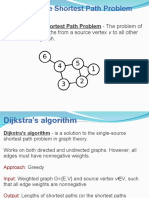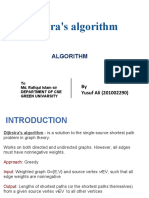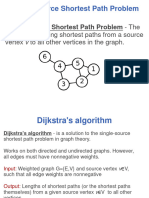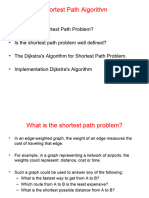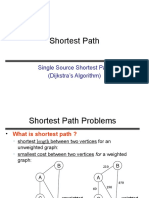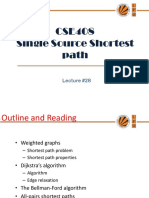0% found this document useful (0 votes)
7 views16 pagesDijkstra Algorithm
Dijkstra's Algorithm is a method in graph theory for finding the shortest paths from a source vertex to all other vertices in both directed and undirected graphs, provided all edge weights are non-negative. The document outlines the procedure, pseudocode, and examples of the algorithm, as well as discusses its running times and time complexity. It highlights that the simplest implementation uses an array or linked list, while more efficient implementations utilize an adjacency list with a binary heap or priority queue.
Uploaded by
sibugrow598Copyright
© © All Rights Reserved
We take content rights seriously. If you suspect this is your content, claim it here.
Available Formats
Download as PPTX, PDF, TXT or read online on Scribd
0% found this document useful (0 votes)
7 views16 pagesDijkstra Algorithm
Dijkstra's Algorithm is a method in graph theory for finding the shortest paths from a source vertex to all other vertices in both directed and undirected graphs, provided all edge weights are non-negative. The document outlines the procedure, pseudocode, and examples of the algorithm, as well as discusses its running times and time complexity. It highlights that the simplest implementation uses an array or linked list, while more efficient implementations utilize an adjacency list with a binary heap or priority queue.
Uploaded by
sibugrow598Copyright
© © All Rights Reserved
We take content rights seriously. If you suspect this is your content, claim it here.
Available Formats
Download as PPTX, PDF, TXT or read online on Scribd
/ 16
